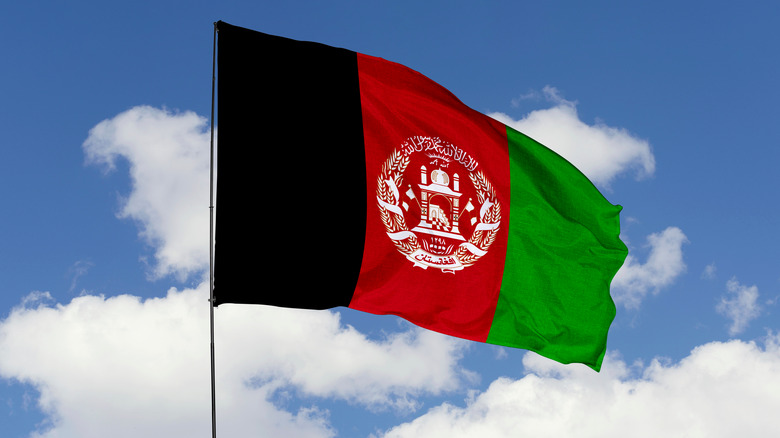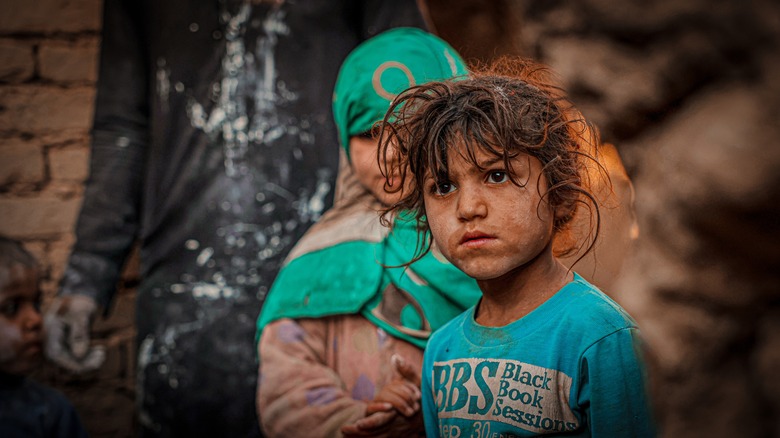The UN Reports Staggering Malnutrition Rate In Afghanistan
On a planet that plays host to 8 billion humans, per Worldometers, as many as 828 million — more than 10% of the world's population — don't have enough food to live healthy, active, productive lives, according to the U.N.'s World Food Programme (WFP). As bad as that may sound, the situation is even worse for the 49 million among them (just over half of the world's hungry) currently verging on famine. "Famine" is declared when, among other things, at least 30% of a population's children are enduring such severe malnutrition that some are already dying as a result, as the International Rescue Committee spells out.
The WFP was founded in the late 1960s to address famine, preferably before hunger can rise to that catastrophic level (via the UN World Food Program USA). Although the WFP's work in Nigeria, Ethiopia, South Sudan, Democratic People's Republic of Korea (DPRK), and Somalia, among others, has been widely reported throughout the last six decades, the WFP has been working in Afghanistan since 1963 in a continuing attempt to avert encroaching famine.
Notwithstanding these efforts, harsh realities in Afghanistan, and in particular, the Taliban's takeover of the nation in 2021, have escalated hunger, malnutrition, and the risk of outright famine to a boiling point, per AP News. And it's not that there isn't enough food, education, healthcare, and other aid going to the people of Afghanistan. Rather, it's that Taliban restrictions, including bans on what women are allowed to do, have thwarted distribution.
Afghanistan is becoming the world's largest humanitarian crisis
Since the Taliban took over Afghanistan in 2021, per AP News, hunger, malnutrition, and the risk of famine have put the nation's needs ahead of some traditionally associated with such issues (i.e., Ethiopia, South Sudan, Yemen, Syria), the UN WFP USA states. Afghanistan's population stands currently at roughly 41.7 million, of whom 24 million don't have enough food to eat, Action Against Hunger points out. And a full six million people in Afghanistan are so malnourished as to be considered on the brink of starvation, as the UN WFP USA notes on its web page devoted to its work in Afghanistan.
Moreover, seven million of those currently facing malnutrition in Afghanistan are children under the age of five and their mothers, according to Phillipe Kropf, a U.N. spokesman for the WFP (via AP News). As a result, nearly 10% of Afghanistan's children are in a state of "wasting," which UNICEF describes as "the extreme manifestation of severe acute malnutrition." Even among those that are not suffering from wasting, there is, nevertheless, a 41% risk of "stunting," which WHO defines as impairment of normal growth and development (via UNICEF).
Although Afghanistan's malnutrition numbers are staggering, the situation has not yet reached the level of famine, as Kropf told AP News. The hope is, of course, that famine can be averted. As the Deputy Secretary General of the UN tweeted yesterday, the UN remains "determined to deliver in Afghanistan despite ever-changing challenges."

